
National Art Gallery, the former royal palace of Bulgaria. (906k)
From the Sofia entry in Wikipedia:
Sofia is the capital and largest city of Bulgaria. It is situated in the Sofia Valley at the foot of the Vitosha mountain in the western parts of the country. The city is built west of the Iskar river, and has many mineral springs, such as the Sofia Central Mineral Baths. It has a humid continental climate. Being in the center of the Balkans, it is midway between the Black Sea and the Adriatic Sea, and closest to the Aegean Sea.
Known as Serdica in Antiquity and Sredets in the Middle Ages, Sofia has been an area of human habitation since at least 7000 BCE. The recorded history of the city begins with the attestation of the conquest of Serdica by the Roman Republic in 29 BCE from the Celtic tribe Serdi. During the decline of the Roman Empire, the city was raided by Huns, Visigoths, Avars and Slavs. In 809 Serdica was incorporated into the Bulgarian Empire by Khan Krum and became known as Sredets. In 1018, the Byzantines ended Bulgarian rule until 1194, when it was reincorporated by the reborn Bulgarian Empire. Sredets became a major administrative, economic, cultural and literary hub until its conquest by the Ottomans in 1382. From 1530 to 1836, Sofia was the regional capital of Rumelia Eyalet, the Ottoman Empire's key province in Europe. Bulgarian rule was restored in 1878. Sofia was selected as the capital of the Third Bulgarian State in the next year, ushering a period of intense demographic and economic growth.
All pictures are © Dr. Günther Eichhorn, unless otherwise noted.









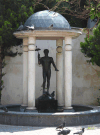



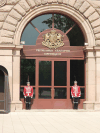






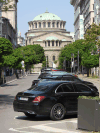
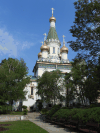
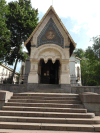







From the Dragalevtsi Monastery entry in Wikipedia:
Dragalevtsi Monastery of the Holy Mother of God of Vitosha (Bulgarian: Драгалевски манастир „Света Богородица Витошка“, Dragalevski manastir „Sveta Bogoroditsa Vitoshka“) is a Bulgarian Orthodox monastery on the lower slopes of Vitosha mountain on the outskirts of the capital Sofia in western Bulgaria. Founded in the mid-14th century by Bulgarian tsar Ivan Alexander, the monastery was abandoned after the Ottoman conquest of Sofia and reestablished in the late 15th century, when it became an important literary center. The monastery church and some of its frescoes date from this period.
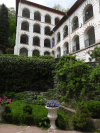



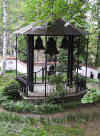
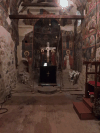


This page contains 38 pictures

Main page for България (Bulgaria)
Page last updated on Fri Jun 17 18:11:55 2022 (Mountain Standard Time)
Page last updated on Tue Apr 23 20:25:15 2024 (Mountain Standard Time)
Sofia on guenther-eichhorn.com